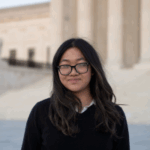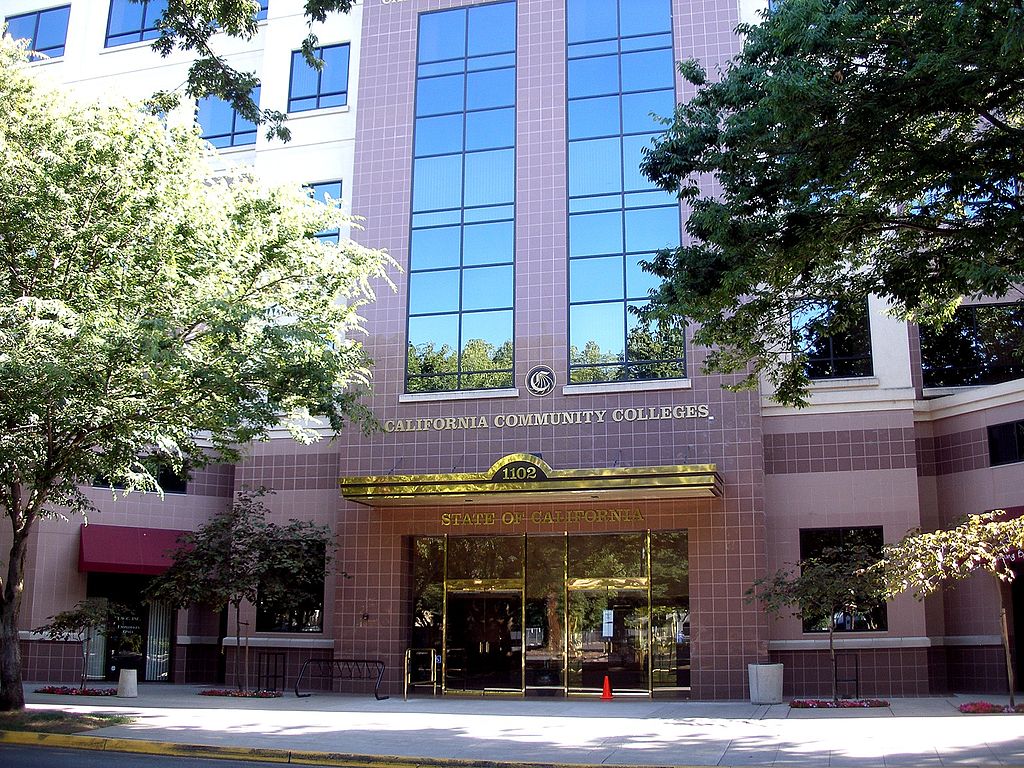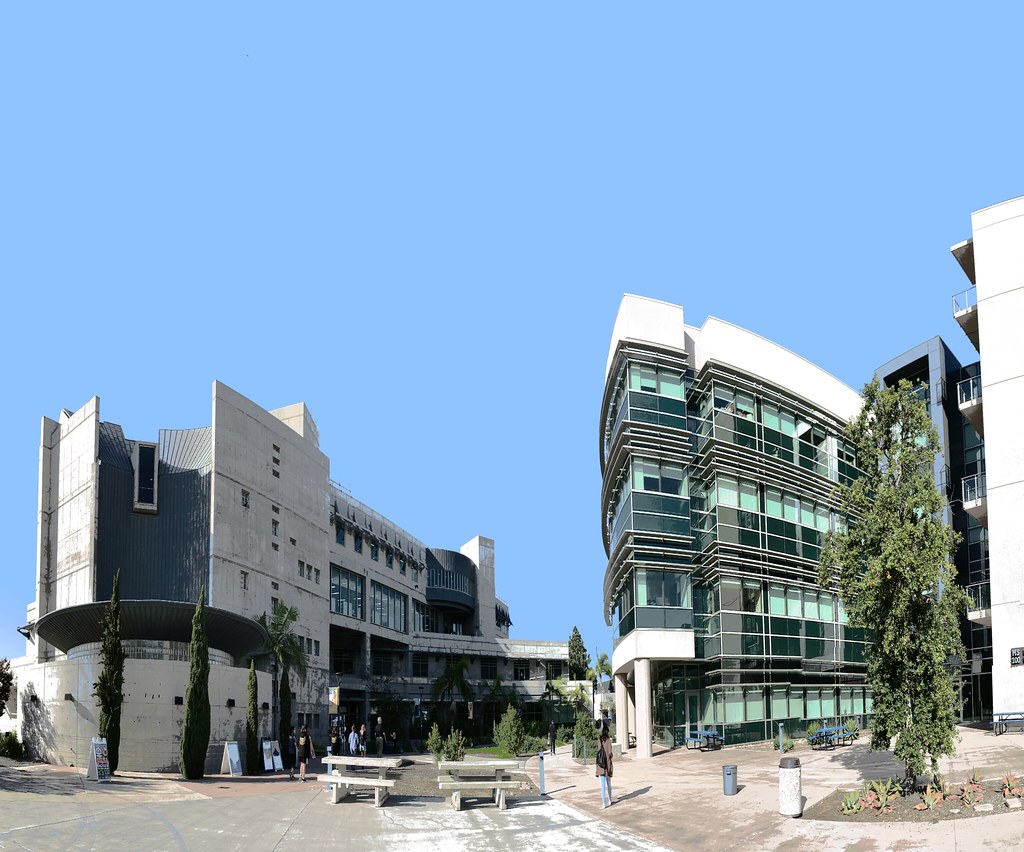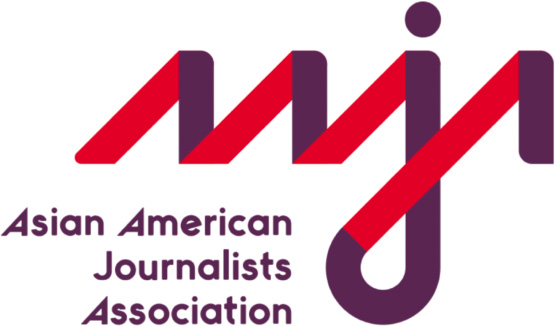Analysis
 While the Trump administration shutters DEI initiatives nationwide, queer Asian students at California community colleges face compounded vulnerabilities — from reduced funding for identity-based programs to systemic barriers already tied to race, sexuality, and class.
While the Trump administration shutters DEI initiatives nationwide, queer Asian students at California community colleges face compounded vulnerabilities — from reduced funding for identity-based programs to systemic barriers already tied to race, sexuality, and class.
Published August 21, 2025
 Diamy Wang
Diamy Wang

The headquarters of California Community Colleges in downtown Sacramento in 2007. The state’s community college system has over 2.1 million students and claims to be the most diverse higher education system in the U.S. (Photo by Coolcaesar at English Wikipedia licensed under CC BY-SA 3.0.)
As the Trump administration cracks down on diversity, equity and inclusion initiatives in higher education, LGBTQ+ Asian students are already feeling the impacts at California’s community colleges — and they’re concerned about what’s to come.
LGBTQ+ Asians in the United States have long had to navigate complex dynamics because of their identities. As part of multiple marginalized communities, they often confront xenophobia and homophobia at the same time — a “multi-layered” oppression, according to Glenn Magpantay, U.S. Commissioner for Civil Rights and a former National Queer Asian Pacific Islander Alliance executive director.
Some California colleges and universities now have student organizations dedicated to the intersection of queer and Asian identities. But these efforts haven’t quite reached the California community college system, which boasts more than 2.1 million students and claims to be the most diverse higher education system in the country.
Asian Americans have historically been overlooked in conversations around the LGBTQ+ community, though roughly 685,000 adults identify as Asian American Pacific Islander and LGBTQ+ in the U.S., according to a 2021 report from the Williams Institute at the UCLA School of Law. For queer Asian students — who are already more likely to face economic insecurity — the federal government’s destabilization of DEI initiatives could further erode their existing support systems.
“It’s often the experience … that all the gays are white, all the Asians are straight,” Magpantay said, referencing a common stereotype. “Where do we [LGBTQ+ Asians] belong?”
This intersectionality inspired James Adivino, a student at Chabot College in Hayward, California, to become the chair of the Student Senate for California Community Colleges’ Queer Caucus last year.
“The queer experience is not just white, you know,” Adivino, who is transgender and pansexual, said.
In DEI crackdown, community colleges aren’t the target
Although he repeatedly criticized DEI initiatives during his first term, President Trump’s efforts to dismantle DEI became a focal point of his 2024 presidential campaign and now in his second administration.
Higher education is especially a target. The federal government has opened civil rights investigations and threatened to withhold hundreds of millions of dollars in funding for schools that have not eliminated DEI initiatives. The National Institutes of Health has also taken aim at research grants for universities that examine topics relevant to women, racial minorities and LGBTQ+ people.
Despite the federal crackdown, California officials have continued to express their support for DEI measures — even as the US government put state funding on the line.
“By bringing diverse perspectives to their campuses, schools foster a culture of learning, debate, and growth that benefits their students for the rest of their lives,” said California Attorney General Rob Bonta in a February 2025 press release.
Federal policy changes have not impacted California community colleges as much as their four-year counterparts. Community colleges are not usually hubs for research, making them much less vulnerable to defunding. Additionally, the California Community College Athletic Association — which is separate from the NCAA and oversees the state’s community college athletics — allows trans athletes to compete.
Some say this has helped soothe their concerns about protections for queer Asian students and other marginalized groups at community colleges.
Community colleges are “relatively more shielded,” said Karen Chow, an English professor at De Anza College, a community college in Cupertino, California. “And so we can still continue a lot of our DEI initiatives and equity initiatives, and, you know, do things to try to maintain student access for student populations that are vulnerable, like undocumented students … and LGBTQ+ [students].”
California community college leaders have also expressed support for DEI initiatives despite the increasing federal pressure.
In a statement after Trump signed an executive order to dismantle the U.S. Department of Education, Chancellor Alberto Román of the Los Angeles Community College District — the largest community college district in the state and one of the largest in the country — wrote that the district would “continue to vigorously uphold and defend” diversity.
Augustin Dao, who attended MiraCosta College, a community college in North San Diego County, centered much of his work around advocacy for DEI initiatives before he graduated in the spring of 2024.
“While a lot of the wheels turned on their own in [MiraCosta College’s] administration, they were eager to hear from me and involve [students’] perspectives,” Dao, the former vice president of DEI in MiraCosta’s student government, wrote in a statement to AAJA VOICES. “Even when it wasn’t perfect or actions weren’t enough, it felt like there was support from the institution.”
Community colleges are still bracing for impact
It’s not clear what the Trump administration’s broader impact will be on DEI programs at community colleges. But any changes could come as soon as the next academic year.
Many student advisory boards could disband and there will likely be “less events based on certain identity markers,” said Tabi, an LGBTQ+ Asian international student who recently graduated from a community college in Pasadena, California. Tabi spoke on the condition they be identified by a nickname due to concerns for personal safety based on their immigration status.
The current political climate has had a chilling effect on Asian and international students speaking out, especially since these groups are already reluctant to do so, Tabi said. For Asians in America, they said, the model minority myth — the stereotype that Asians are a highly successful minority group, especially compared to Black and Hispanic Americans — particularly deters them from voicing their concerns.
“I think we are just like a community [that] is more hushed, because we believe that silence will give us some semblance of protection against whatever’s happening,” they said. “I don’t think it will at all.”

Even though community colleges aren’t the biggest target of federal defunding efforts or crackdowns against DEI, their students could still feel some of the impact. The Trump administration has proposed massive cuts to the Education Department’s budget, targeting programs and funding sources meant to support low-income students — for whom California community colleges can already be prohibitively expensive.
“Community college runs on social welfare programs and social welfare initiatives. I mean, the idea of a community college is like a grassroots social welfare initiative,” said Tabi. “If you really get down to it, it’s serving people who are not financially able to cover their education.”
Federal funding accounts for only a sliver of the California Community Colleges system’s budget — approximately 2% of the 2025-26 proposed budget. But compared to the University of California and the California State University systems, the community college system is vastly more dependent on state and federal funding.
Centers serving LGBTQ+ students, commonly known as pride centers, are even more dependent on these funds.
For example, the Pride Center at Mesa College, a community college in San Diego, received around $225,000 from a one-time federal grant in 2023. But earlier this year, Trump singled out the San Diego Community College District’s LGBTQ+ pride centers in his discretionary spending levels for the 2026 fiscal year. The district’s funds were only a fraction of his plan to cut $10 billion in education spending. However, this money supplemented half of the Mesa Pride Center’s budget, according to its coordinator, Lucio Lira, who spoke with CalMatters.

For the third year in a row, the 2025-26 California state budget allocated $10 million for LGBTQ+ centers at community colleges. However, with 116 community colleges across the state, the California Community College Chancellor’s Office reported that each school was allotted anywhere between $29,000 to just over $255,000 last school year. This means the support systems for queer students can vary greatly from campus to campus.
“I would say the website says we have resources, but in actuality … I didn’t even know that we had support [offerings] for queer students,” said Adivino, the Chabot College student.
On the other hand, Adivino, who is Filipino, said Chabot was “very good with representing and supporting Asian American students” on campus, with a dedicated learning community on AAPI cultures and a specialized career counselor.
This imbalance of support at some institutions makes DEI funding even more critical — and cutting any of it would be “a rollback on the most valuable part of community college,” said Dao, the MiraCosta College graduate. For queer Asians, defunding DEI in higher education risks weakening their support systems on multiple fronts, from pride centers to Asian American organizations to social welfare programs.
Some students are holding hope that the DEI battle in higher education won’t affect community colleges. Part of that optimism stems from the importance of these institutions, particularly for queer Asians and other marginalized groups.
“Community colleges across [San Diego] and across [California] serve an incredibly diverse population because they can bring people in,” wrote Dao. “They provide opportunity for those who have been shunned from it. They provide a home when it feels like one has none.”

University of Pennsylvania
Seattle 2025





Apply
Become a fellow or editor
Donate
Support our impact
Partner
Work with us as a brand

The Asian American Journalists Association (AAJA) is a membership nonprofit advancing diversity in newsrooms and ensuring fair and accurate coverage of communities of color. AAJA has more than 1,500 members across the United States and Asia.